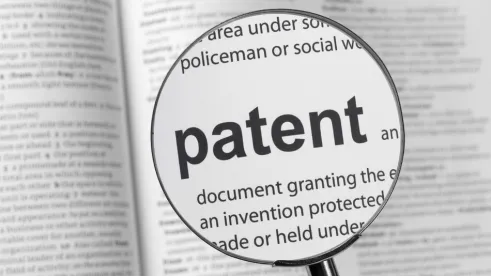In ClassCo, Inc. v. Apple, Inc. the Federal Circuit upheld a decision from the Patent Trial and Appeal Board (“the Board”), which invalidated several claims of ClassCo’s US Patent No. 6,970,695 (“the ’695 patent”) that discussed caller ID technology that would verbally announce the name of an incoming caller before the call is connected. The ’695 patent has been asserted in litigation against Apple, Samsung, LG, HTC America, Hewlett-Packard, Palm, Inc., Nokia, and ZTE Corp., in both the Northern District of Illinois, and another suit in the District of Massachusetts, respectively. Apple filed an Inter Partes Review (“IPR”) against the ’695 patent, whereby the Board found the ’695 patent obvious in view of two prior art references, the Fujioka and Gulick patents.
The Board found that the Fujioka patent disclosed all but one of the elements of the ’695 patent. The Board reasoned that it would have been obvious to a person having ordinary skill in the art to combine the Fujioka patent with the Gulick patent to include the missing element. On appeal, ClassCo argued that it would not have been obvious to a person having ordinary skill in the art to combine the two patents. ClassCo claimed that the Board’s decision failed to properly adhere to the obviousness standards described in the seminal United States Supreme Court decision in KSR as it relates to combining prior art: “[a] basic characteristic of a KSR combination is that it ‘only unites old elements with no change in their respective functions.’” Contrary to ClassCo’s argument, the Federal Circuit held that the Board properly applied the rationale in KSR to the Board’s decision in the IPR. The Federal Circuit reasoned that a person having ordinary skill in the art would be “able to fit the teachings of multiple patents together like pieces of a puzzle.”
ClassCo further argued that the Board failed to give weight and consideration to ClassCo’s evidence of industry praise and commercial success. The Federal Circuit agreed that the Board erred in dismissing ClassCo’s evidence of nonobviousness. The Federal Circuit reasoned that although the Board erred by not addressing ClassCo’s secondary considerations, it was not dispositive. The Court further reasoned that the Board should have given some weight and consideration to ClassCo’s evidence. However, in light of the foregoing, the Federal Circuit upheld the Board’s decision to invalidate several claims of ClassCo’s ’695 patent for being obvious in view of the Fujioka and Gulick patents.
This post was written with contributions from Anthony E. Faillaci.





 />i
/>i
